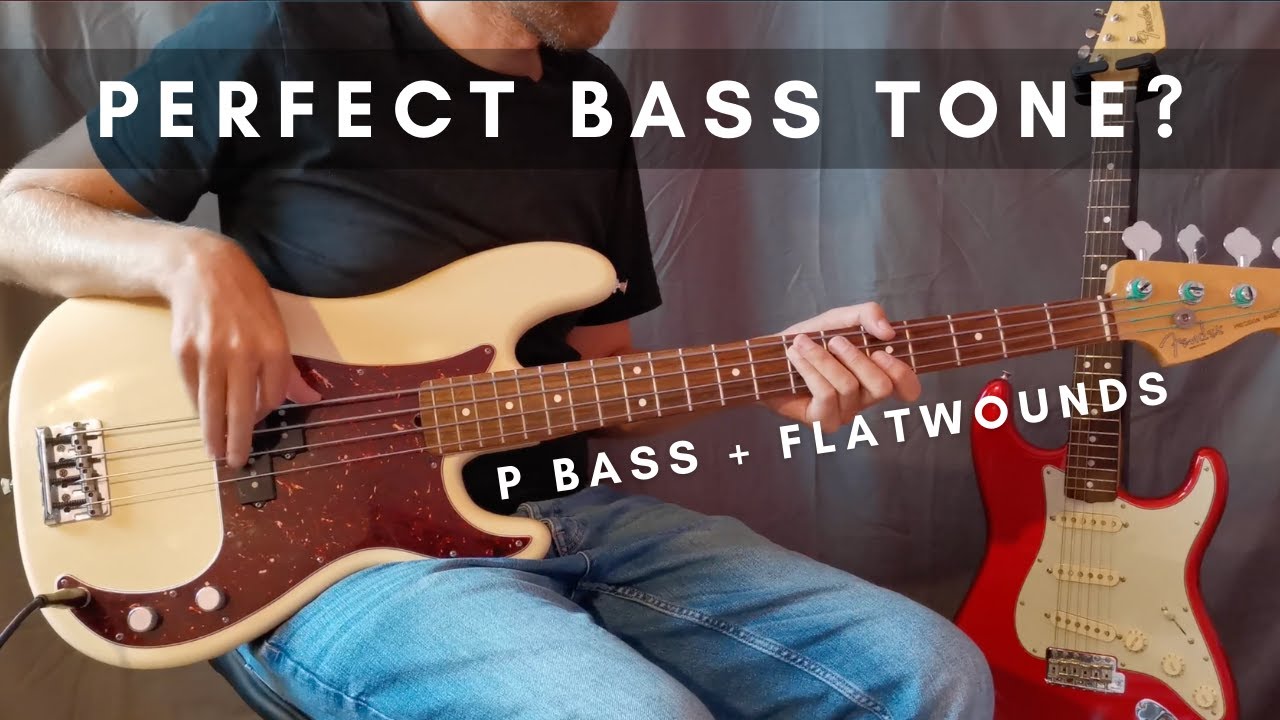The Pros and Cons of Using Flatwound Strings on P Bass.
As a bassist, I often noticed that my fingers would stick to the strings in warm weather, making my playing less smooth. This also happened sometimes when I was a bit nervous during a performance. This experience was mostly with roundwound strings. With flatwound strings, this problem is significantly less, giving me more confidence when playing.
Choosing the right strings for your P Bass can greatly impact your tone. Flatwound strings are known for their warm, smooth sound with rich midrange and subdued highs. They’re perfect for genres like jazz, blues, and classic rock that benefit from a vintage feel. On the other hand, roundwound strings are brighter and more articulate, making them great for funk, metal, and modern rock where a crisp, punchy tone is essential.
Table of Contents
Factors to Consider When Choosing Strings for Your P Bass
Musical Genre and Playing Style:
- Flatwound Strings: Great for jazz, blues, and classic rock with their warm, vintage tones.
- Roundwound Strings: Ideal for funk, metal, and styles needing a bright, punchy sound.
Personal Preferences:
- Consider string tension, feel, and tone: Different strings offer varying levels of tension. Higher tension can provide a firmer feel, while lower tension allows for easier playing. Tone ranges from warm and full to bright and sharp, depending on your preferences.
- Experiment with different strings to find what suits you best: Try various brands and types of strings to see what feels and sounds best for your style. Starting with a basic set and gradually exploring options can help you understand each string’s characteristics.
- Think about durability, longevity, and budget: Consider how long strings last and their resistance to wear. While some strings might be pricier, they often offer extended durability and reliability. Your budget will also play a role in your choice.
Bass Setup:
- Scale length, neck profile, and pickups affect string performance: The scale length can influence string tension and feel. Neck profile determines playing comfort, and pickup configuration impacts tone and volume.
- Consult a luthier to optimize your bass for your preferred strings: A skilled luthier can adjust your bass to suit your specific strings and playing style. They can tweak action, intonation, and even pickup height to get the best performance from your strings.
Tonal Differences Between Flatwound and Roundwound Strings
Flatwound Strings:
- Sound: Warm, smooth sound with rich midrange and subdued highs.
- Best For: Jazz, blues, and classic rock.
Roundwound Strings:
- Sound: Bright, articulate tone with distinct zing and high frequency presence.
- Best For: Funk, metal, and modern rock.
When choosing between flatwound and roundwound strings, consider your musical style. Flatwounds offer vintage warmth and smoothness, while roundwounds provide brightness and aggression.
Performance Differences Between Flatwound and Roundwound Strings
Flatwound Strings:
- Feel: Smooth, reduced finger noise, great for recording.
- Techniques: May require adjustments for slapping or popping.
- Tension: Typically higher, resulting in a firmer response.
Roundwound Strings:
- Feel: Enhanced grip and tactile feedback.
- Techniques: Better for dynamic playing styles requiring pronounced string interaction.
Understanding these differences helps tailor your string choice to your playing style.
Tips for Using and Maintaining Flatwound Strings
- Wipe Strings: Clean strings with a cloth after playing to remove sweat and oils.
- Clean Fretboard: Use a suitable cleaner to keep the fretboard and frets clean.
- Apply Lubricant: Use a small amount of string lubricant on contact points to reduce friction.
- Proper Storage: Store your bass in a case or gig bag to protect from environmental damage.
- Control Humidity: Maintain consistent humidity to prevent rust and oxidation.
Alternative String Options for Your P Bass
- Halfwound Strings: Combine flatwound and roundwound features for warmth and clarity.
- Stainless Steel Strings: Offer a bright, punchy tone with high durability.
- Nickel-Plated Steel Strings: Provide a balance between brightness and warmth.
- Nylon Tapewound Strings: Give a warm, thumpy sound similar to upright basses.
Expert Opinions and Experiences with Flatwound Strings on P Bass
- James Jamerson, Paul McCartney, Carol Kaye: All have used flatwound strings for their iconic tones.
- Luthiers and Technicians: Recommend flatwounds for their vintage sound and reduced finger noise.
- Bass Players’ Experiences: Many report enhanced tonal quality and playing feel with flatwounds.
5 Best flatwounds for p bass
Here are five highly regarded roundwound strings for a Precision Bass:
- D’Addario XL Nickel – Known for their balanced tone and durability, these strings are a favorite among P Bass players.
- Rotosound Swing Bass 66 – Bright and punchy, these stainless steel strings are great for rock and funk.
- Ernie Ball Hybrid Slinky – Offers a smooth feel and a well-rounded tone, making them a solid choice for various styles.
- GHS Boomers – These nickel-plated steel strings provide a warm yet aggressive tone, ideal for cutting through a mix.
- Dean Markley Blue Steel – Cryogenically treated for longevity and enhanced brightness, these strings are praised for their clarity.
Each of these has its own character, so the best choice depends on your playing style and tonal preference.
Conclusion
Flatwound strings can transform your P Bass with their warm, smooth tones and comfortable feel. Whether you’re aiming for a vintage vibe or simply seeking a more consistent playing experience, flatwounds offer a fantastic option. Remember to consider your musical style, playing preferences, and bass setup when choosing your strings. With proper maintenance and care, your flatwound strings will continue to deliver great performance and tone, enhancing your musical expression on the P Bass.
